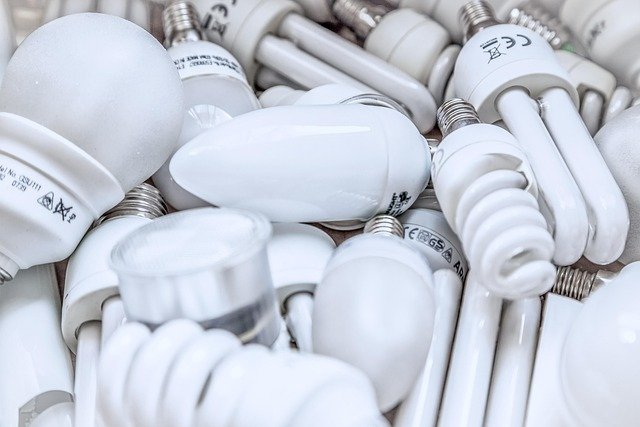Smart Home Energy: Efficient Electricity and Gas Use
Discover how electricity and gas power modern homes and practical strategies to lower your utility bills. This guide explains how energy reaches your house, the typical household uses of electricity and natural gas or propane, safety considerations, pros and cons of each fuel, and actionable steps to improve energy efficiency and save money on energy bills.

Electricity and gas are the backbone of contemporary home life, running everything from lighting and electronics to heating and cooking. Understanding how each energy source arrives at your property, what it’s most commonly used for, and how to manage consumption will help you control costs and reduce environmental impact.
How electricity and gas reach your home
Electricity is generated at power plants using various fuels or renewable sources, then transmitted over high-voltage lines to substations. From substations the voltage is reduced and distributed through a network of lines to neighborhoods and, finally, to individual homes. Natural gas is extracted from underground reservoirs and travels through a network of high-pressure transmission pipelines to local distribution systems. Local utilities then deliver gas to homes through smaller service lines. Propane is an alternative fuel typically stored in a tank on-site and periodically refilled by a supplier.
Both delivery systems require infrastructure and maintenance: electrical grids depend on generation capacity and transmission networks, while gas delivery depends on pipeline safety and proper storage for bottled or tanked fuels.
Main household uses for electricity and gas
Electricity powers the majority of appliances and devices in modern houses: lighting, refrigeration, laundry machines, dishwashers, entertainment equipment, computers, and air conditioning. Electric ovens and induction cooktops are also common in many homes.
Gas is most often used where high, immediate heat is needed. Typical gas applications include space heating via furnaces or boilers, water heating, and gas cooktops and ovens. Some households use gas for clothes dryers and indoor or outdoor fireplaces. A notable advantage of non-electric gas appliances is they can sometimes operate during power outages, provided the appliance does not require electricity for ignition or controls.
Practical ways to reduce energy use and lower bills
Cutting consumption saves money and reduces emissions. Here are effective strategies to consider:
-
Improve insulation and air sealing: Ensure walls, attics, floors, and around windows and doors are well insulated and sealed. Proper insulation reduces heating and cooling demands.
-
Choose energy-efficient appliances: Look for high-efficiency models, ideally with ENERGY STAR certification, for refrigerators, washers, dryers, and HVAC equipment.
-
Switch to LED lighting: LEDs use a fraction of the energy of incandescent bulbs and have much longer lifespans.
-
Smart thermostat management: Lower thermostat setpoints in winter and raise them in summer, or install a programmable or smart thermostat to optimize temperature schedules automatically.
-
Regular equipment maintenance: Keep furnaces, boilers, air conditioners, and water heaters serviced. Clean filters, check seals, and tune systems for peak efficiency.
-
Reduce standby loads: Unplug devices or use smart power strips to prevent phantom energy draws from chargers, TVs, and other electronics when not in use.
-
Consider upgrades: When replacing systems, weigh long-term savings from high-efficiency heat pumps, condensing boilers, or tankless water heaters against upfront costs.
Comparing electricity and gas: advantages and trade-offs
Electricity Pros:
- Versatility: Powers a wide range of devices and systems throughout the home.
- Renewable potential: Can be supplied from wind, solar, hydro, or other low-carbon sources.
- No on-site combustion: Reduces indoor combustion-related pollutants.
Electricity Cons:
- Cost variability: In some regions electricity can be more expensive than gas for heating.
- Grid dependence: Power outages can interrupt services unless you have backup generation.
Gas Pros:
- Efficient heating: Often less expensive for space and water heating in many locations.
- Quick heat response: Gas stoves and certain heaters provide rapid, controllable heat.
- Some resilience: Gas-powered appliances may work during electrical outages if they don’t rely on electricity.
Gas Cons:
- Safety and ventilation: Requires proper venting to prevent carbon monoxide and other combustion byproducts.
- Leak risks: Gas leaks can be hazardous and require prompt detection and response.
- Availability: Not all areas are served by natural gas pipelines.
Choosing the right energy plan
When selecting an energy provider and plan, consider how you use energy, your budget, and whether you value price stability or green energy options. Below is a quick comparison of common plan types and illustrative rate ranges.
| Plan Type | Provider Example | Key Features | Typical Cost Range |
|---|---|---|---|
| Fixed Rate | EnergyCompany A | Price locked for contract term, predictable bills | $0.11–$0.15 per kWh |
| Variable Rate | EnergyCompany B | Rate changes with market conditions, potential savings or spikes | $0.09–$0.18 per kWh |
| Time-of-Use | EnergyCompany C | Cheaper off-peak rates, higher peak prices to encourage shifting use | $0.07–$0.20 per kWh |
| Green Energy | EnergyCompany D | Electricity from renewable sources or RECs | $0.12–$0.16 per kWh |
Prices are indicative and may change based on supplier, location, and market conditions. Independent research is recommended before making financial decisions.
Final tips for smarter home energy use
Track your consumption with monthly bills or a home energy monitor to understand where most energy is used. Small behavioral changes—like shortening showers, running full laundry loads, and using off-peak hours for heavy appliances—add up. If you’re planning upgrades, compare lifecycle costs and available incentives or rebates for efficient equipment and renewable installations.
By learning how electricity and gas are delivered and used, evaluating the pros and cons of each, and adopting efficient practices, you can lower your bills, increase comfort, and reduce your environmental footprint. Periodically review your plan and equipment choices to take advantage of new technologies and better rates as they become available.






